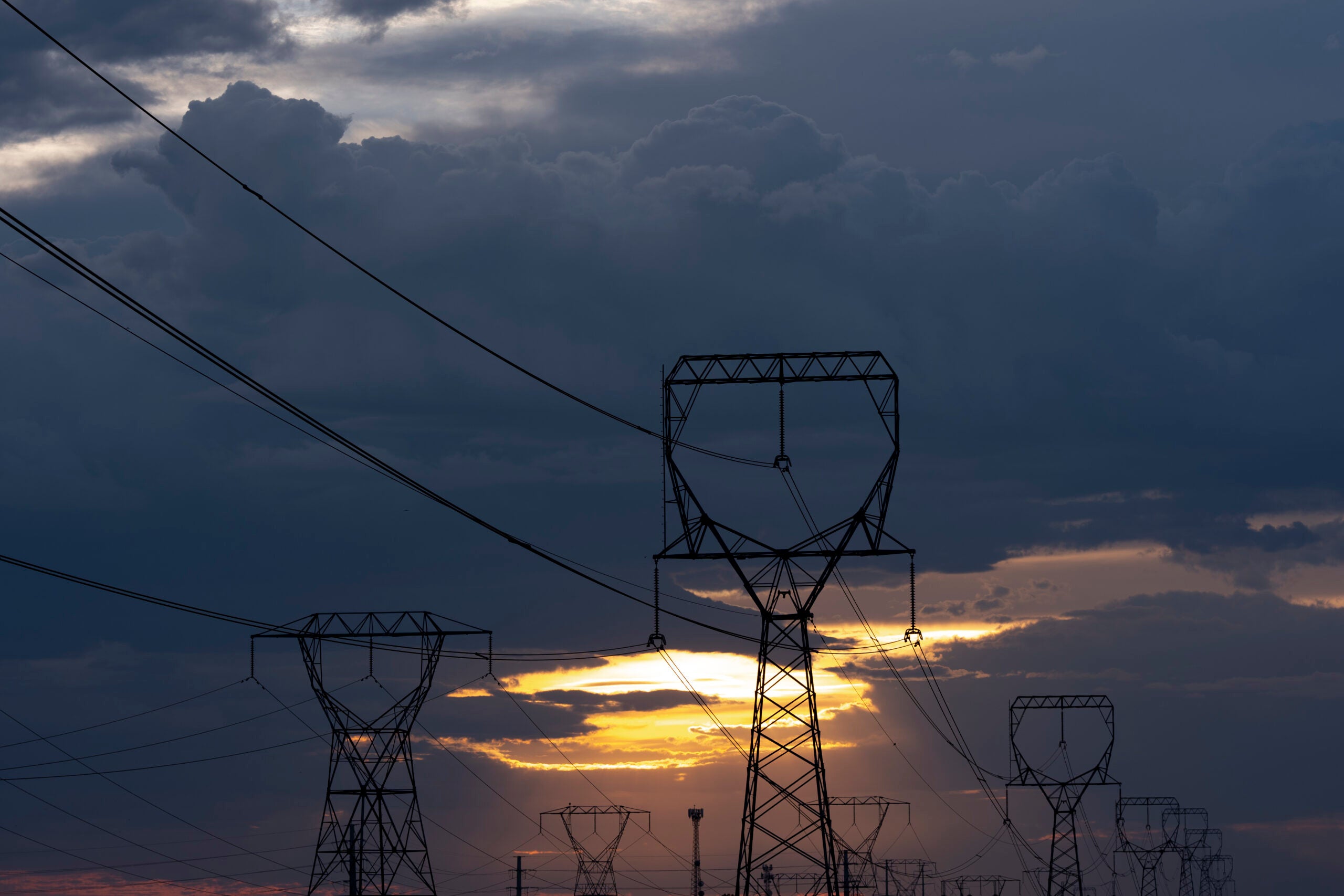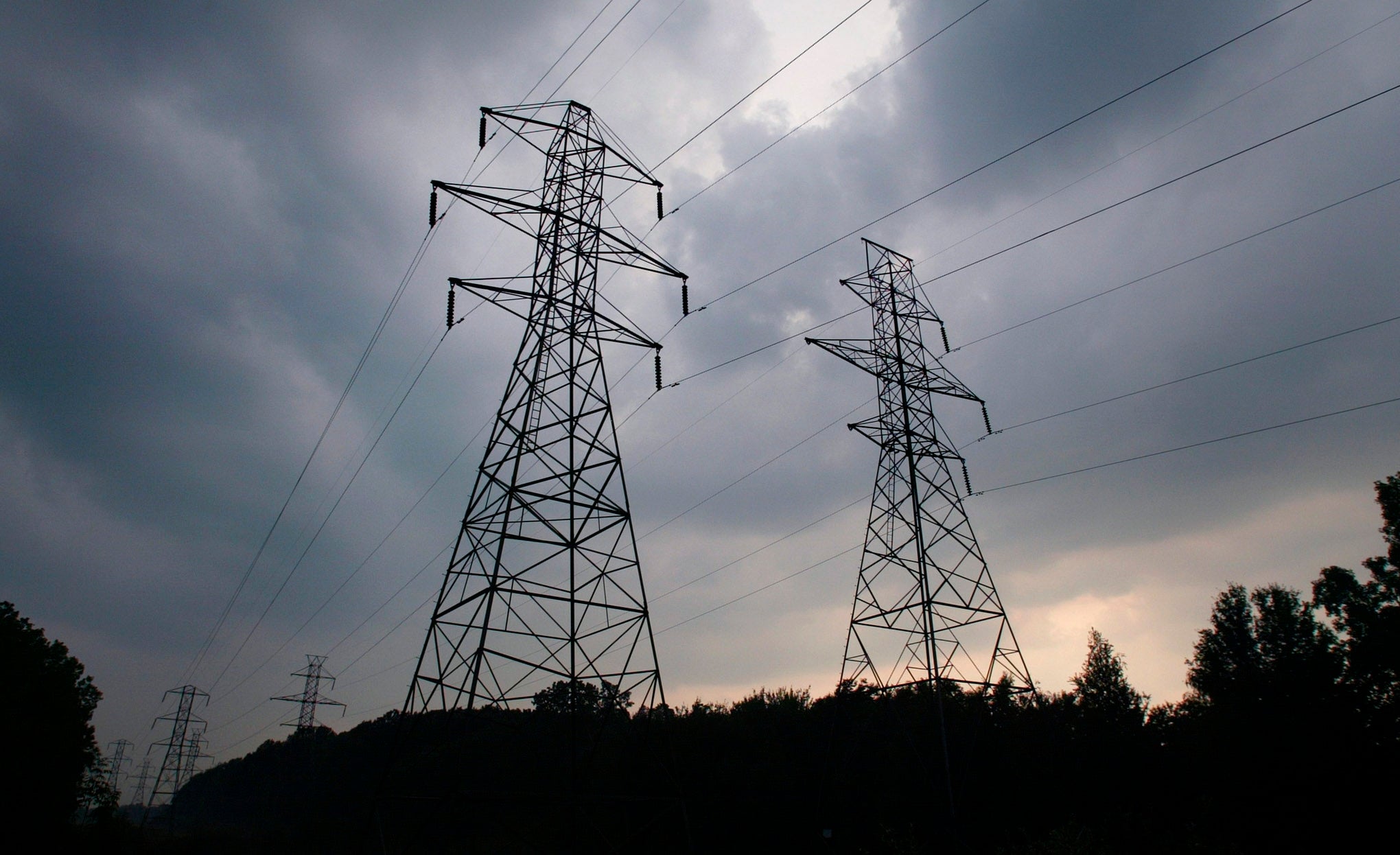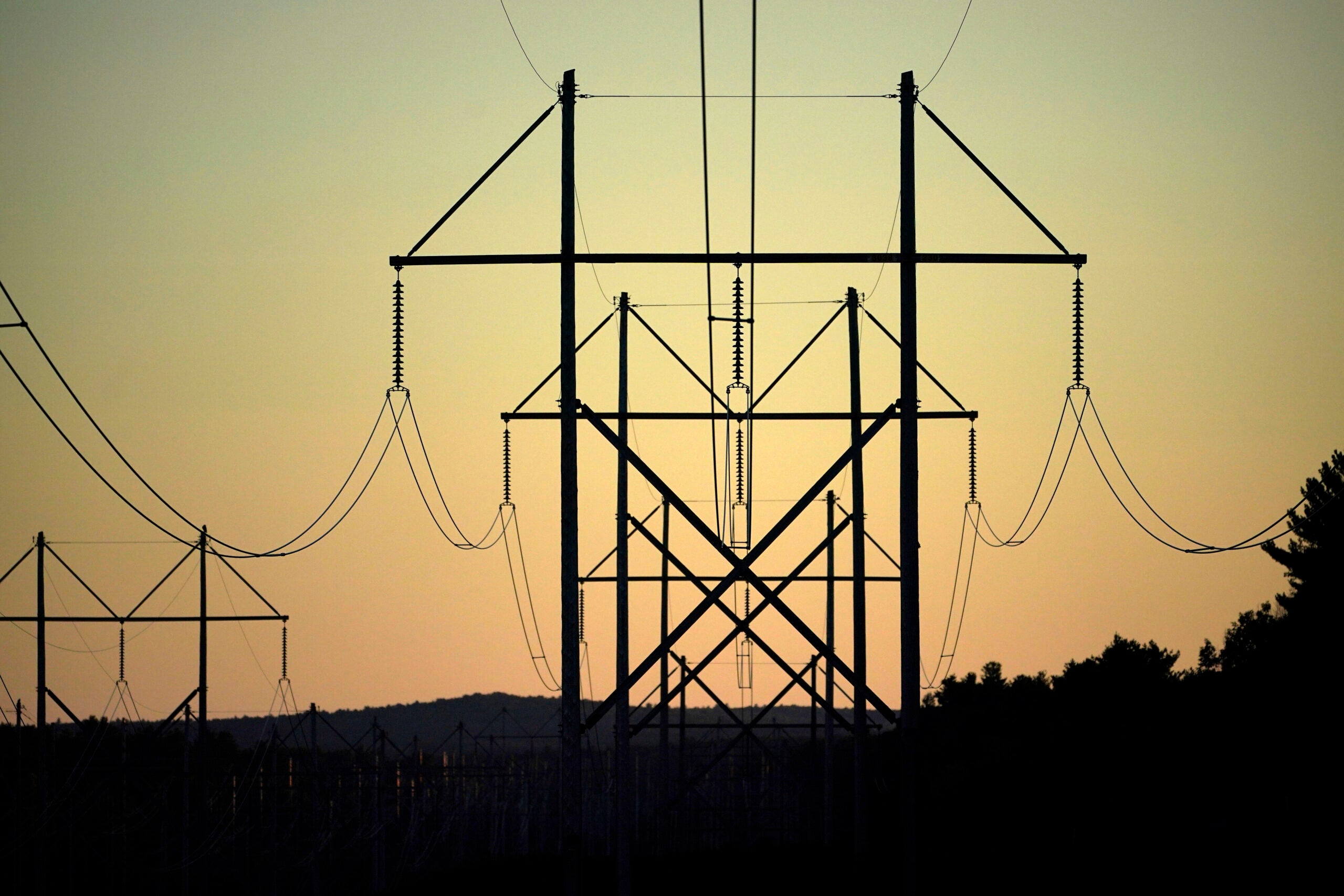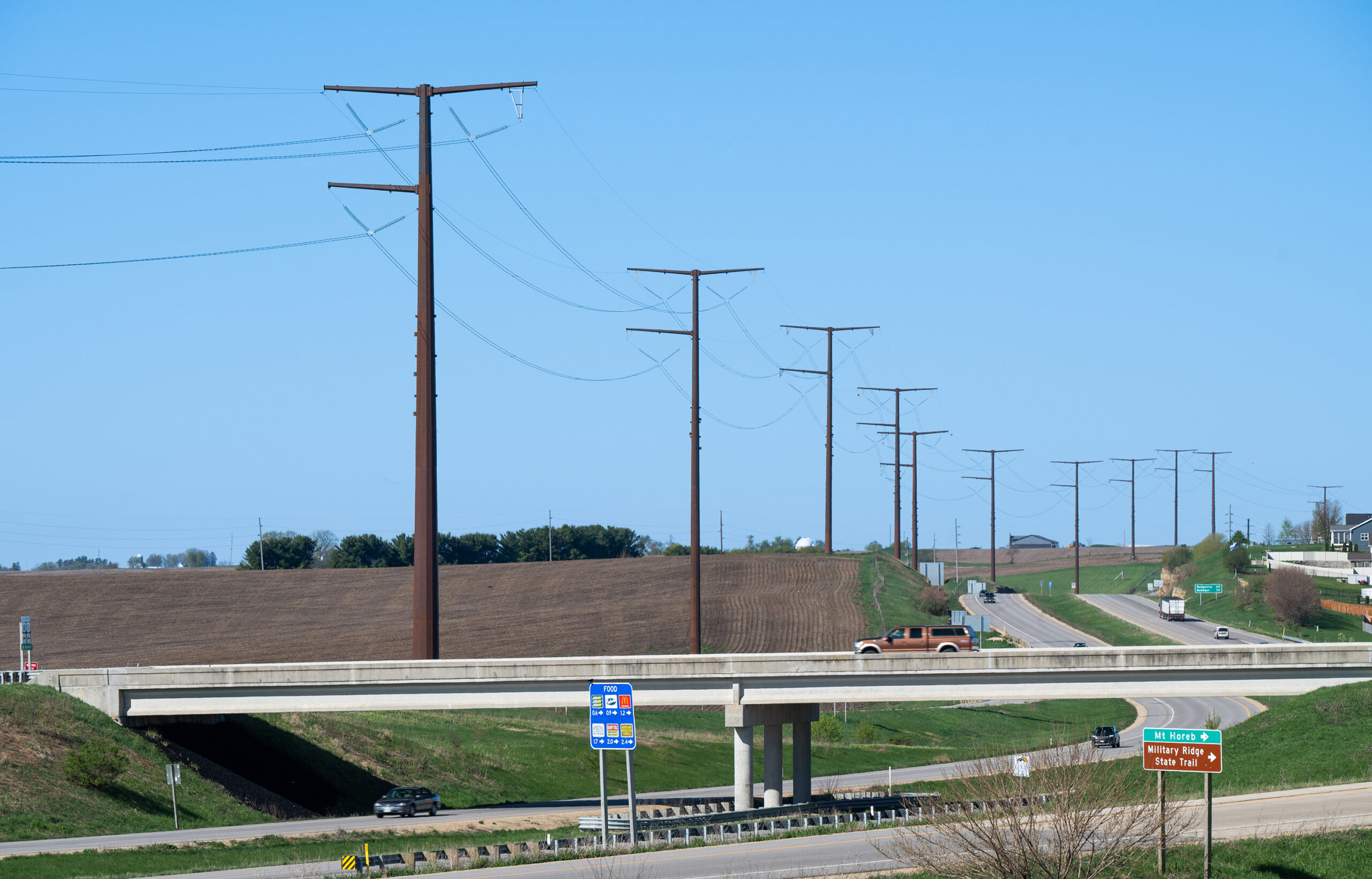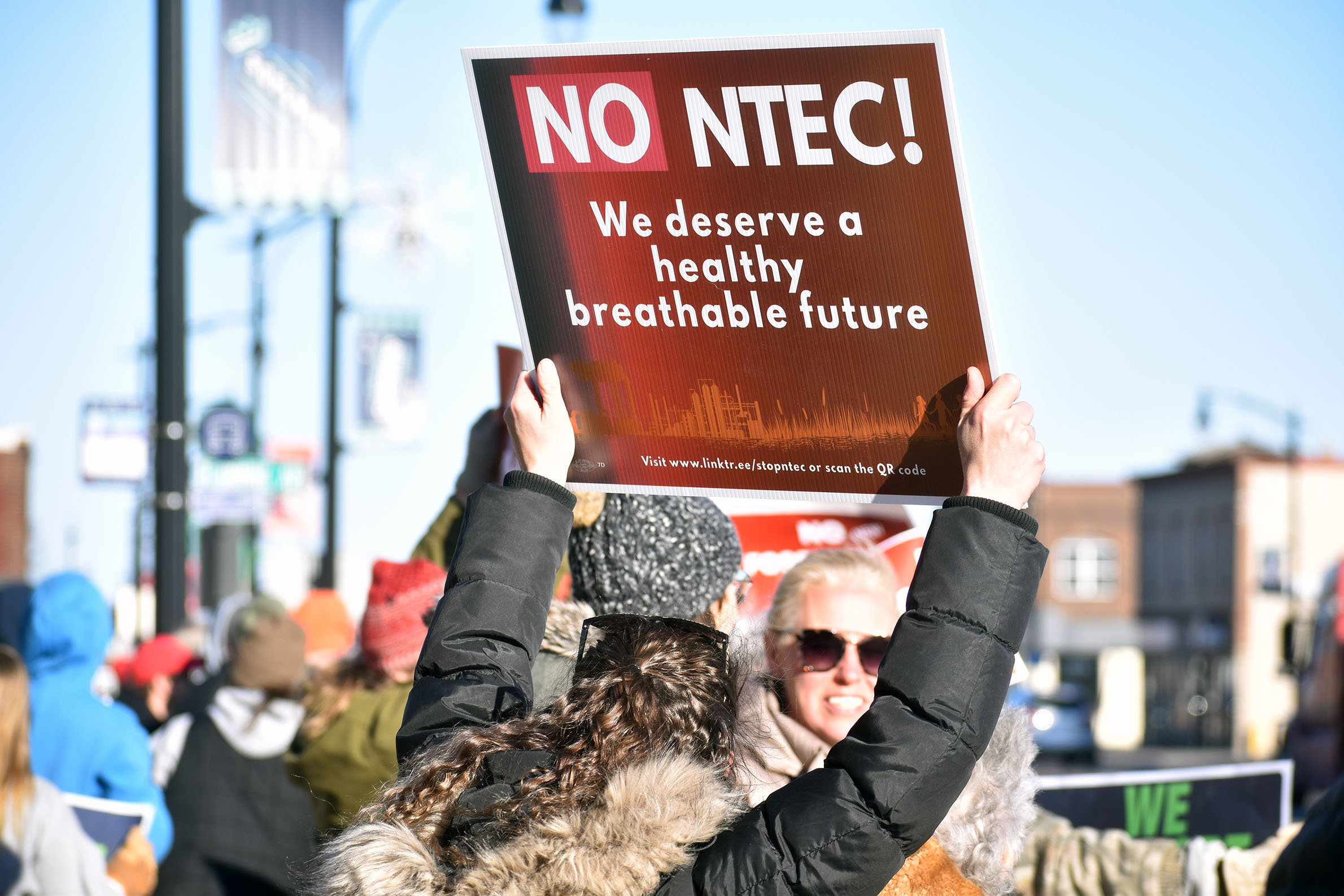A disputed transmission line project running across southern Wisconsin will now cost roughly $90 million more than its owners expected due to rising material costs, land acquisition expenses and ongoing legal challenges.
American Transmission Co., ITC Midwest and Dairyland Power Cooperative are building the 345-kilovolt Cardinal-Hickory Creek transmission line that runs more than 100 miles from Dane County to Dubuque County in Iowa.
The project’s co-owners told the Wisconsin Public Service Commission in a filing on Friday that they expect the cost to build the $492 million power line to grow by $89.8 million or 18 percent beyond the initial price tag.
News with a little more humanity
WPR’s “Wisconsin Today” newsletter keeps you connected to the state you love without feeling overwhelmed. No paywall. No agenda. No corporate filter.
Alissa Braatz, an ATC spokesperson for the project’s co-owners, said in a statement that it’s critical for them to be wise with rising costs on behalf of their energy consumers, investors and owners.
“And we commit to managing escalating costs to the greatest extent possible,” Braatz said.
In the filing, the utilities highlighted “inflationary cost increases” in the cost of construction materials, labor and land acquisition since project estimates were developed in 2018. The Public Service Commission approved the project the following summer.
According to the filing, the price of steel for ATC and ITC Midwest increased on average roughly 112 percent for steel poles. In addition, the cost of aluminum and steel for conductor wires rose an average of about 59 percent. Labor costs for ATC also went up around 12 percent while ITC Midwest saw an increase of roughly 32 percent from 2018. Land acquisition costs also increased 95 percent in Dane and Iowa counties due largely to increasing land values.
Wisconsin’s Citizens Utility Board first raised concerns about the project’s rising costs last year when its owners noted the price tag had grown by more than $49 million.
“This shows that the cost did continue to climb over the last year, and we still don’t actually today know what the ceiling is on how expensive this project is ultimately going to be,” Tom Content, the board’s executive director, said.
He said experts raised concerns about whether the benefits of the project would outweigh the costs when the transmission line was first approved.
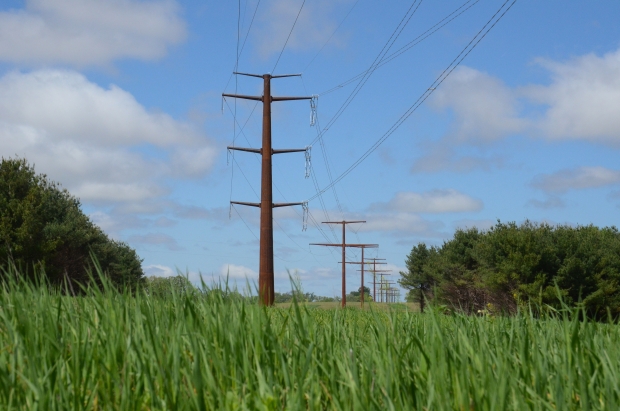
Photo courtesy of American Transmission Company
The project was initially anticipated to create between $23 million and $350 million in economic benefits over its 40-year lifespan. Wisconsin ratepayers were expected to pay up to $72.7 million or about 15 percent of the cost to build the line. The remaining cost would be spread out over the region managed by the Midcontinent Independent System Operator, which oversees the power grid in 15 states.
Solar projects have also experienced higher costs as the COVID-19 pandemic created supply chain constraints. Prior to the global health crisis, Content said the Elm Road Generating Station owned by We Energies cost $150 million more than that project’s initial price tag of $2.15 billion.
The Citizens Utility Board has urged the Public Service Commission to provide more oversight of the line’s construction, saying it should order utilities to provide an estimate of total costs.
Meghan Sovey, a spokesperson for the commission, said in an email that PSC continues to monitor the project’s progress and costs. Sovey added the commission has authority “if and when appropriate” to reopen the project’s proceedings or take other action.
The project’s co-owners said a total project cost estimate is not yet available, saying it’s unknown how legal expenses and the timing of federal decisions may affect the final price tag. Braatz said construction of the transmission line is 90 percent complete, but Content noted the project doesn’t yet have a permit to cross the Upper Mississippi River National Wildlife Refuge.
Last year, a federal judge blocked the project’s river crossing through the refuge. U.S. District Judge William Conley sided with conservation groups that challenged approvals issued by federal agencies for the project, including the Driftless Area Land Conservancy and Wisconsin Wildlife Federation.
Conley agreed the Rural Utilities Service violated federal environmental law because its analysis of alternatives to the project was too narrow in scope. The judge also found building the line in that area isn’t compatible with the purpose of the refuge. Utilities appealed that decision, and they argued agencies fully complied with federal environmental law.
Last month, the 7th Circuit Court of Appeal overturned the lower court’s ruling and sent it back for dismissal, saying it was too soon to challenge approvals that were not yet final. Speaking on behalf of the line’s co-owners, Braatz said the decision was a win for the project.
Howard Learner is executive director of the Environmental Law and Policy Center, which represented conservation groups in the case. He said they’re disappointed with the ruling.
“What this means is that we have to wait, again, for the federal agencies to make up their minds again, which direction they’re going in,” Learner said. “Hopefully, the federal agencies will follow the course and make the obvious conclusion that building a huge transmission line through the middle of a national wildlife refuge that’s protected is not compatible with conservation values.”
Owners of the transmission line say expenses tied to the lawsuit and two other cases have also driven up the project’s costs. Learner said it’s unlikely that legal costs played a significant role in tens of millions of dollars in rising costs for the transmission line. Braatz contended that litigation has required the line’s co-owners to repeatedly modify construction plans, decreasing efficiency and increasing costs.
As the construction of the line nears completion, Braatz said the project’s co-owners are working with the U.S. Fish and Wildlife Service as it weighs the utilities’ proposal for a land exchange. The line’s owners are also coordinating with the Rural Utilities Services as the agency completes a supplemental environmental assessment on what utilities referred to as minor route changes. They hope the project will secure the necessary approvals to place the line in service by December.
Utilities have argued 115 renewable generation projects rely on the line’s construction to tie into the regional power grid, which would cut carbon emissions by up to 1.2 million tons each year. Conservation groups contend the line will facilitate more power from fossil fuel sources.
Editor’s note: American Transmission Co. and the Citizens Utility Board are underwriters of Wisconsin Public Radio.
Wisconsin Public Radio, © Copyright 2026, Board of Regents of the University of Wisconsin System and Wisconsin Educational Communications Board.

